
Differentiate between open and closed stratification systems
Distinguish between caste and class systems
Understand meritocracy as an ideal system of stratification
- Material Type:
- Module
- Date Added:
- 09/20/2018

Differentiate between open and closed stratification systems
Distinguish between caste and class systems
Understand meritocracy as an ideal system of stratification
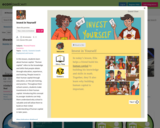
In this lesson, students learn about human capital. “Human capital” refers to the knowledge and skills that people obtain through education, experience, and training. People invest in their human capital through education, on-the-job training, and practice. Throughout their school careers, students make investments in their human capital. Introducing this concept to younger students can help them understand why school is valuable and will allow them to build on their initial understanding of human capital in later years. This content from Econ Lowdown also features alignment to national Financial Literacy and/or Economics standards.

Lesson 1: Invest in Yourself
Students solve word puzzles with varying degrees of knowledge. They discover that more knowledge (human capital) leads to more productive outcomes. The students identify ways in which people invest in human capital and the link between investment in human capital and earning income. This content from Econ Lowdown also features alignment to national Financial Literacy and/or Economics standards.
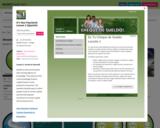
All of the lessons are correlated with the National Personal Finance Standards and the National Standards in Economics. See the Lesson Correlation section (pdf) for more information.

Lesson 2: "W" Is for Wages, W4 and W2
Students compute the gross pay for a fictional character named John Dough given his hourly wage and the number of hours worked. They compare gross pay to net pay. They learn what FICA and federal income taxes are. They learn how to complete a W-4 form and what a W-2 form is. This content from Econ Lowdown also features alignment to national Financial Literacy and/or Economics standards.
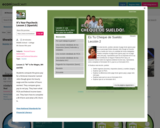
Each lesson is accompanied by a SMART Notebook file that contains visuals and handouts (whenever practical), along with definitions of terms and review questions.

Students participate in "Beat the Financial Expert!," a game that illustrates positive and negative spending behaviors. They analyze the "Beat the Financial Expert!" results, identify effective and ineffective budgeting behaviors and create a budget from a transaction history.
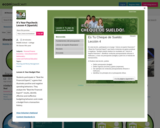
Students participate in "Beat the Financial Expert!," a game that illustrates positive and negative spending behaviors. They analyze the "Beat the Financial Expert!" results, identify effective and ineffective budgeting behaviors and create a budget from a transaction history.

Explore PBS's "On The Money," program for teens to investigate teens & money, budgeting, bank accounts, credit cards, calculators, and moneymaking ideas.

Analyze spending, research costs, and plan for purchases using a spreadsheet. Time to complete: 7-9 hours

This site addresses the history of social security. There is an invaluable amount of information on this site (timelines, audio clips, etc.).
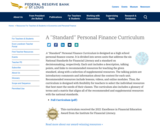
A “Standard” Personal Finance Curriculum is designed as a high school personal finance course. It is divided into seven units that address the six National Standards for Financial Literacy and a standard on decisionmaking, respectively. Each unit includes a description, talking points, and links to recommended resources for teaching the given standard, along with a selection of supplemental resources. The talking points are introductory comments and information about the content for each unit. Recommended resources include lessons, videos, and online modules. Thus, the curriculum is designed with flexibility for teachers to select the individual resources that best meet the needs of their classes. The curriculum also includes a glossary of terms and a matrix that aligns all of the recommended and supplemental resources with the national standards.

Listen as Jacqueline Novogratz discusses investing in sustainable small business solutions for the world's poor. The goal, says Novogratz, CEO of Acumen Fund, is to find a way to bring essential services to low income people not just today but in a way that's sustainable over time.

This U.S. Census website gives current and past information on the income of Americans.

Using a Berenstain Bears' book, students are introduced to concepts such as spending, goods, services, income, saving, and interest. Lesson is detailed and has good activities. Includes questions about the story that teach students about consumer spending and personal finance.

Employees, employers, and a workforce trainer describe how asking questions on the job can help you improve and impress employers by demonstrating your willingness to learn.

Problem solving is a key aspect of many kinds of jobs. Employees and managers in several industries give examples of problem solving in the workplace.

This site contains a unit on budgeting money for use by middle school teachers. Includes enrichment problems, a bibliography, and many example problems and situations.